July 2012, John Schmitt and Janelle Jones
The U.S. workforce is substantially older and better-educated than it was at the end of the 1970s. The typical worker in 2010 was seven years older than in 1979. In 2010, over one-third of US workers had a four-year college degree or more, up from just one-fifth in 1979. Given that older and better-educated workers generally receive higher pay and better benefits, we would have expected the share of “good jobs” in the economy to have increased in line with improvements in the quality of workforce. Instead, the share of “good jobs” in the U.S. economy has actually fallen. The estimates in this paper, which control for increases in age and education of the population, suggest that relative to 1979 the economy has lost about one-third (28 to 38 percent) of its capacity to generate good jobs. The data show only minor differences between 2007, before the Great Recession began, and 2010, the low point for the labor market. The deterioration in the economy’s ability to generate good jobs reflects long-run changes in the U.S. economy, not short-run factors related to the recession or recent economic policy.
Report Images (click for larger version)
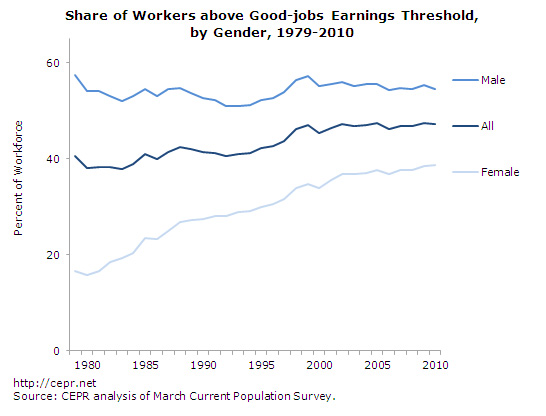 |
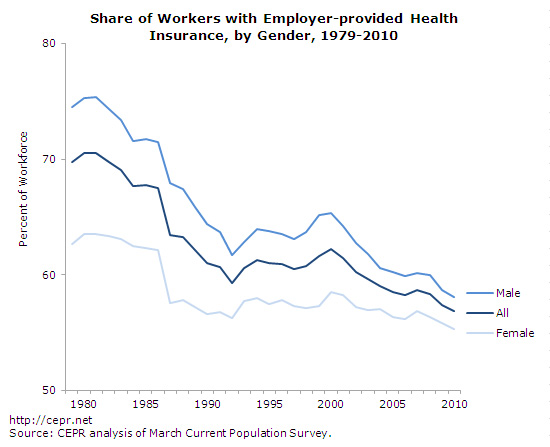 |
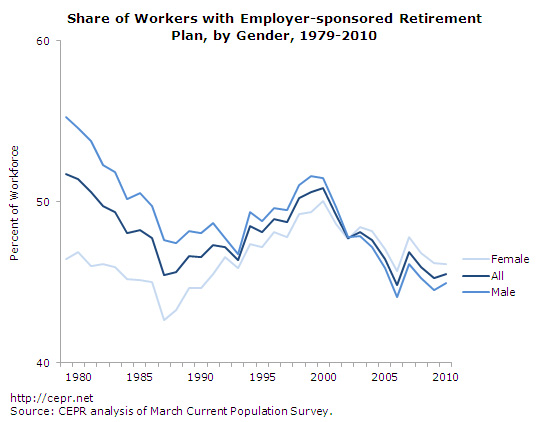 |
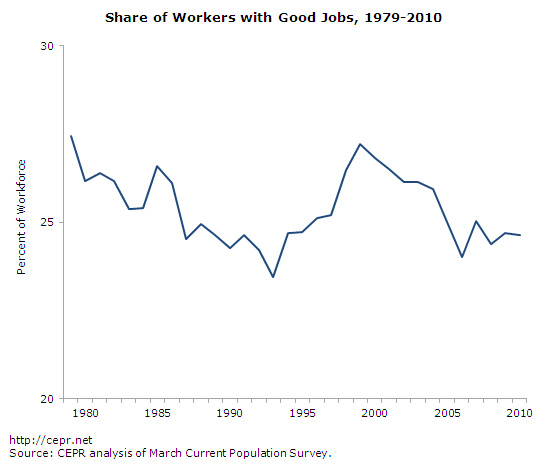 |
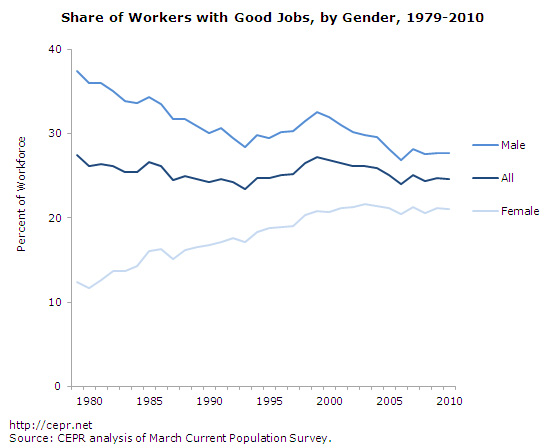 |
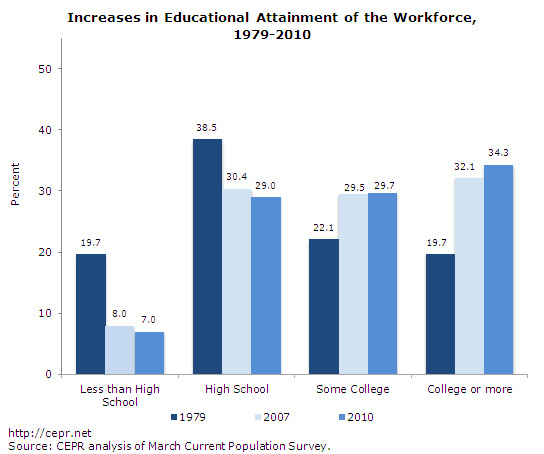 |
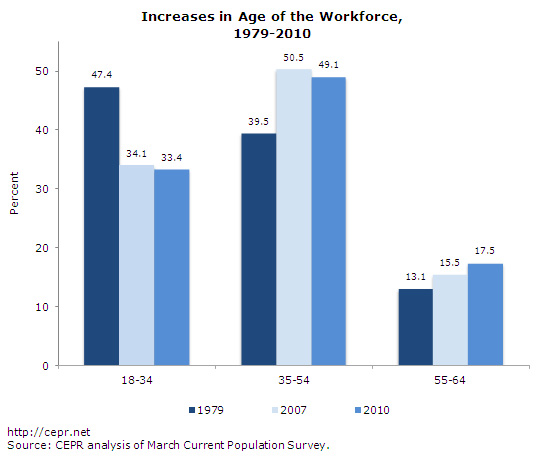 |
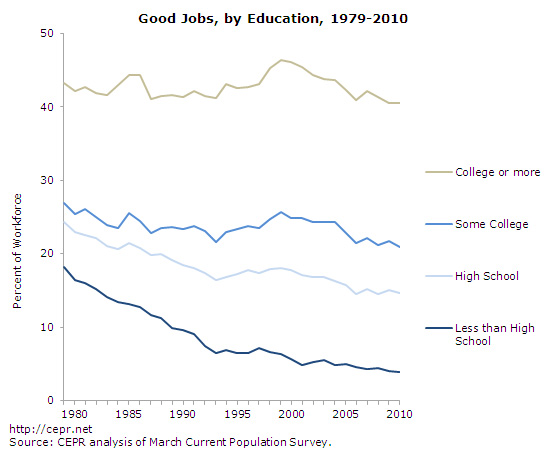 |
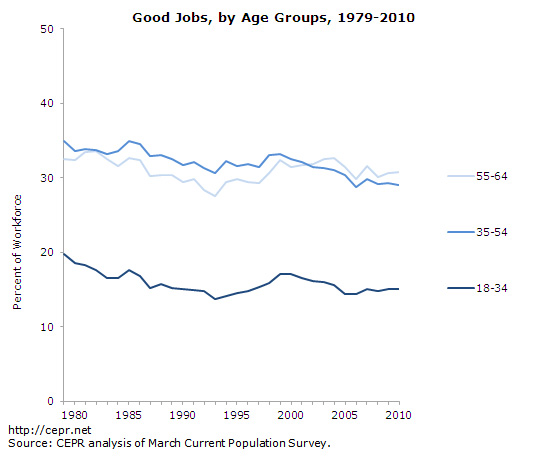 |